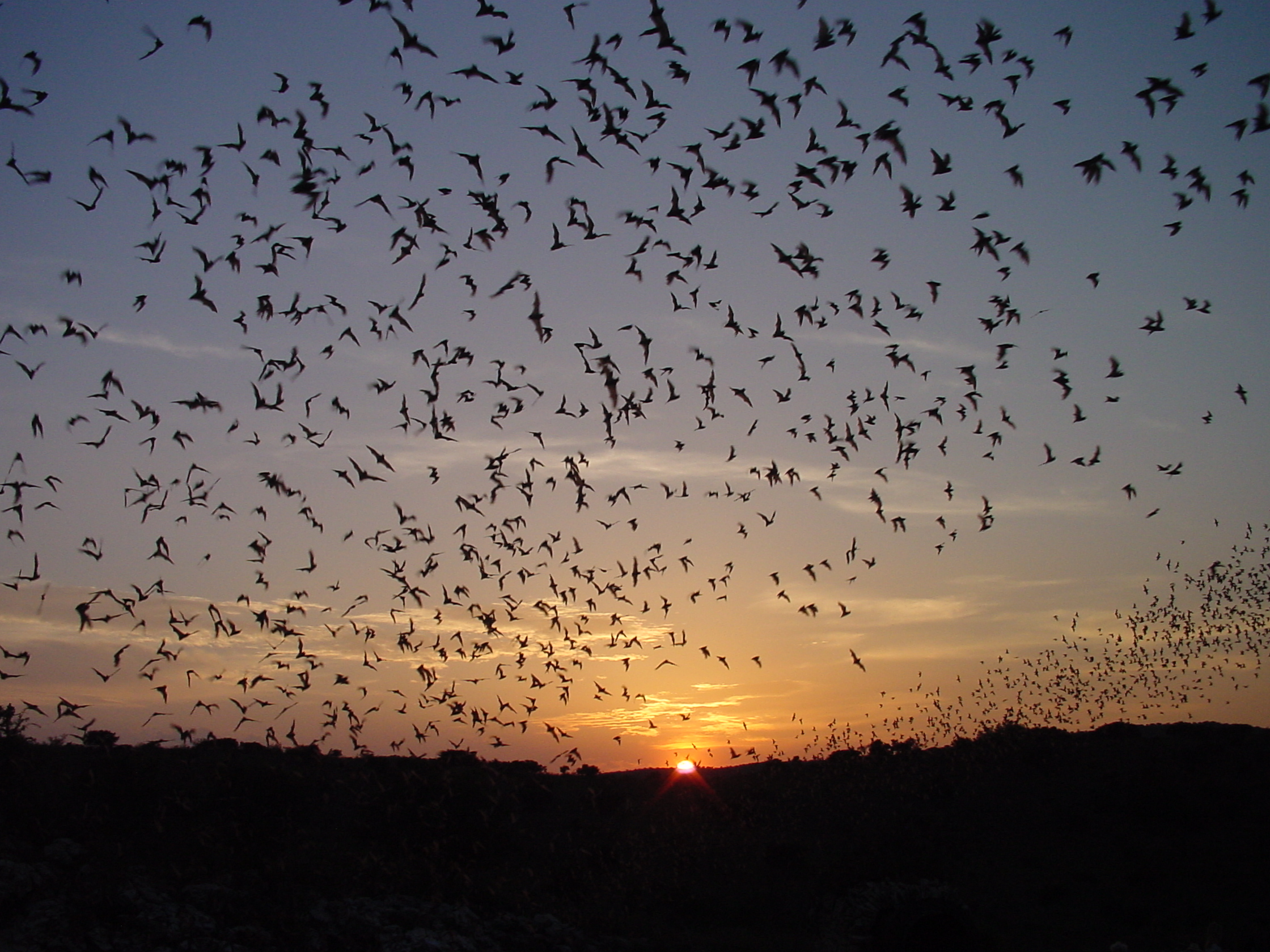 The Bat Flight
The Bat Flight
Few things in nature are as enchanting as mass animal gatherings and migrations.Many people become entranced watching penguins huddle together for warmth during the long Antarctic winters.Wildebeest and elephant migrations in Africa capture and hold the attention of television viewers.There is something inexplicably enthralling about watching large numbers of wild animals.
This is just as true at Carlsbad Caverns as it is elsewhere in the world.People come from all over the world to watch nature at its finest in the form of the Brazilian free-tailed bats leaving the cave each evening in the summer.The size of the colony fluctuates from night to night and season to season.Between 200,000 and 500,000 bats call the cave home over the summer, swelling to over one million during migration.
What is it that draws these bats here?Why do they return season after season?And what can people do to ensure this spectacle continues?
Bats, like every other creature, require certain features in their homes (roosts).The first and probably most important aspect is a need for safety.Not many troglodytes (cave dwelling species) are found in Carlsbad Cavern.The cave crickets, spiders, and insects found here generally don't pose a threat to the bats.Animals that would prey on the bats such as snakes, ringtails, and raccoons are limited in how far they can enter the cave due to temperature and lack of light.
As social creatures bats also require space in their chosen homes.The bats may be s mall in stature, but everyone needs his own place to hang, so many bats gather in the roost. With their abundant population, they can raise the cave temperature from 56⁰F (13⁰C) to the upper 90s F (upper 30s C).That's a lot of bat body heat!
The third attribute bats need from their shelter is proximity to food.A cave might be safe and spacious, but if there's no food source near, it might as well not exist as far as the bats are concerned.The Brazilian free-tails specialize in moth and beetles—two agricultural pests in this corner of New Mexico.Since the main cave here in the park offers safety, space, and a close food source, bats find it meets all their needs.They will continue to return as long as their needs are met and no other place offers a better space to call home.
As to answering the question about what we can do to make sure the bat flight continues, the answers are varied.We have no control over the wet/dry cycles the bats must respond and adapt to.There are some concerns, however, that we can address.Recreational cave development has been limited to areas away from the bat roost for decades.The holes blasted by guano miners in the early 1900s have been patched to replicate the cave in its more natural state.Rangers also clear the natural entrance to the cave before the bats begin to fly so we won't interfere with or change their natural inclinations to do a warm-up fly in the twilight zone before exiting the cave.Possibly the one policy the park made that helps the bats feel at home more than anything else is the ban on electronic devices during the bat flight program.Before the prohibition, cameras held aloft would block the view of visitors, hundreds of flashes temporarily blinding the bats and people, and no one was really in the moment.No electronics means no one blocks anyone else's view, the bats don't feel threatened by the crowd, and families and friends can bond by experiencing one of Mother Nature's marvels.
Very few places in the United States remain wild enough to view wildlife in their natural settings on such a large scale.Carlsbad Caverns National Park is one of the few places.We invite you to join us for this breath taking event every summer as long as the bats see fit to bless us with their presence. Photo by Dr. Nick Hristov
